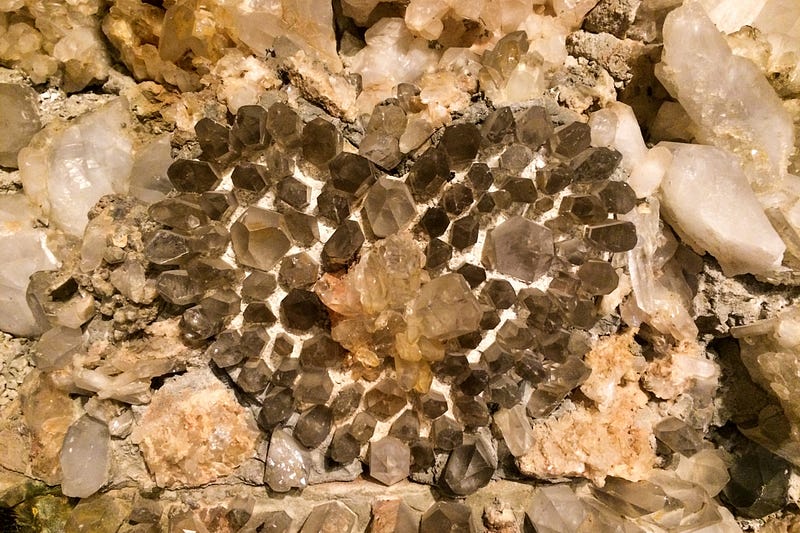Real-Time Distribution Case Study, Week 25: The Mid-Point, Pivots, Love & Community
Annie Lundgren
it’s the mid-point
five weeks in
five weeks to go
a natural pivot point
when goalsbecome unrecognizable
murky in the rear-view
replaced by goals
we never knew existed
~•~
Several people have commented, “I hope the tour is going as well as it seems from social media and blog updates.”
Yes, it is, but not necessarily in the ways we expected or planned.
We are meeting our audience, our tribe. In many ways, this is a miracle.
We have 30–70 people at each screening, sometimes more, sometimes less. We have learned that per the theaters, 30 is good and over 50 is great.
Night after night we survey the audience.
Press, Facebook ads and social outreach bring in a few people. Theater owners, friends-of-friends and word-of-mouth bring in 90% of the audience.
Influencers.
And those influencers hear about the film from a phone call from us or a friend. A one-on-one interaction with a trusted influencer translates into about 30 audience members.
We are transitioning our outreach efforts into reaching individual “influencers” instead of individual audience members.
~•~
So then, who is our core customer?
Surely audience members who see Phoenix, Oregon and then want to see all of our other films become life-long, core customers. Yes.
But theater owners, programmers, curators, online content providers, anyone needing content for their communities — they are also our core customers.
Sunday night in Vicksburg, we had another top-level screening, the kind we’d like to duplicate night after night. It wasn’t because we screened to the most people. It was because everyone knew their job and filled their role in the indie-film life cycle:
The audience clapped, asked questions, bought t-shirts, thanked us; they did so effortlessly, with great love and appreciation.
The audience knew their job — to show up, to enjoy, to support and to appreciate indie film — because they had been trained to do so by their trusted & beloved curator.
All three prongs (filmmaker, curator, audience) participated fully to create community, and a one-off screening became a joyful appreciation of the existence & sharing of all art.
~•~
Showing up for each other in community creates a virtuous cycle, with each nourishing experience begetting the next.
The crowds at these top-level cinemas show up for every programmed indie film, no matter the budget or the production quality. They know that by showing up, they allow their programmers to continue to provide them with content.
In turn, the artists are encouraged and reminded that it is important to keep fighting, to keep creating, to keep improving, to keep putting art into the world, because it is needed.
~•~
In Vicksburg, they put words to this.They expressed it so beautifully.
“We need you as much as you need us.”
“Our audiences are so lucky; we show films the theater in the mall will never play.”
“We show what we want, and week after week, our audiences come.”
“All our friends come to the theater. They’ve become our friends.”
“It’s the heyday of small theaters and community audiences.” — Did I hear that right? Heyday? If that is true, is it also a burgeoning heyday for independent film?
“We have different goals than the big studios.” — Yes! Similarly, small production studios have different goals than publicly-owned studios who need to make billions.
And from their audiences:
“We are so thankful for Daniel.”
And like the other theaters we’ve visited…
“We don’t know what we’d do without Michael… without Loretta…without Paul… without Daniel… without Helen… without Megan… without Brad …”
“They’ve changed my life.”
And mine as well. I’m filled with wonder and gratitude that these theater owners and their communities exist. What they create together is inspiring and beautiful.
~•~
The theaters, these very special cinemas, these are our customers, our influencers. There must be several of these in every state, right? Not all indie cinemas meet the criteria, but when they do, we know as soon as we arrive — an obvious trust, appreciation and shared responsibility between programmer and audience to create an experience.
So how do we find these very special small theaters? Many are on the art house convergence list. How do we know their audiences love them? Or if it’s a new owner, still building their audience, who will be helped by our content?
~•~
For distribution, is another option opening up to us? Do we focus on these customers for awhile longer instead of making a play for the larger theaters or the broader digital market? Do we still have time to explore this, maybe into February?
Is the effort worth it? What will it take? How much marketing money will we need? Do we hire a publicist?Do we need a booker? Or is it more important that we are our own bookers? That we meet these customers directly?
But if these are our customers, are we really serving them if we only provide content once every 2–3 years? Many of these theaters played Redwood Highway and have welcomed Phoenix, Oregon, but I see how having more content would be desirable. This must be how filmmakers become mini-distributors.
~•~
as we create new goals
and let go of the old,
we wrap our heads around new ideas
still with so many questions
about all the things no one tells us,
about things that can only be learned by doing
♡ Annie
Photo: Crystals, Hot Springs, Arkansas (Thanks for the tour, Roxy!)
